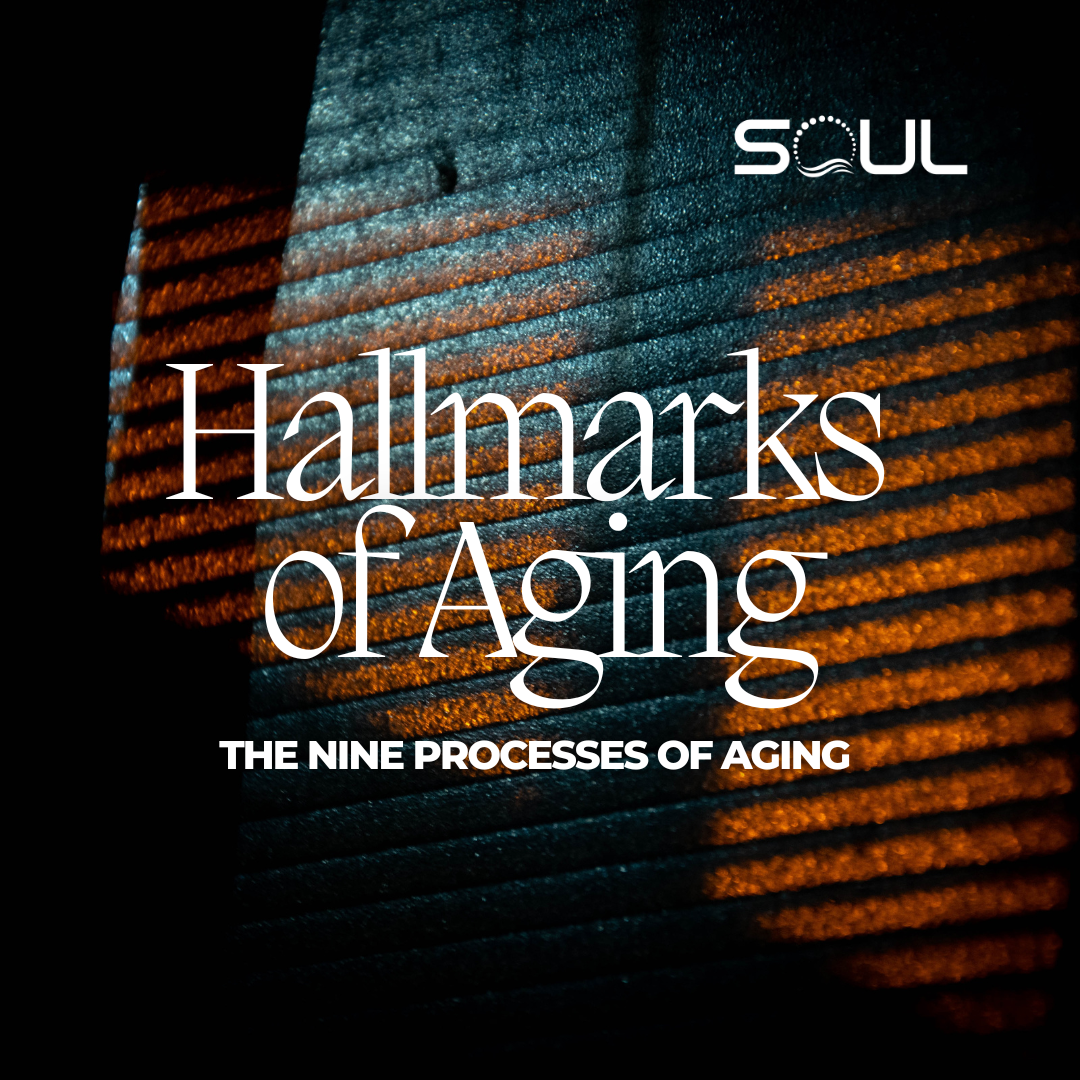
Unveiling the Secrets of Aging: A Journey Through the Nine Hallmarks
Aging is the most natural phenomenon, yet it remains one of life's greatest mysteries. We all yearn for a life that's not just longer but richer in vitality and purpose. What if I told you that the secrets to graceful aging are not locked away in some distant realm but are being unraveled by scientists today? They've identified the "Nine Hallmarks of Aging," a roadmap that deciphers the intricate processes behind why we age and how we might do so more elegantly. Let's embark on this journey together, exploring each hallmark and uncovering the potential pathways to a more vibrant life.
1. Genomic Instability: The Fraying Blueprint of Life
Our DNA is the master blueprint of our existence, dictating everything from the color of our eyes to how our cells function. But like any blueprint that's been copied over and over, errors begin to accumulate. This genomic instability arises from accumulated DNA damage—mutations, breaks, and alterations that slip past our cellular repair mechanisms. Imagine a well-edited manuscript slowly accumulating typos; over time, the story becomes distorted. This deterioration not only accelerates aging but also heightens the risk of diseases like cancer. Could bolstering our DNA repair systems or shielding our genome from environmental assaults be the key to prolonging youth?
2. Telomere Attrition: The Ticking Biological Clock
Think of telomeres as the plastic tips at the ends of your shoelaces—they protect our chromosomes from fraying. Each time a cell divides, these telomeres shorten, acting as a built-in countdown clock for cellular life. When they become too short, the cell can no longer divide and enters a state of senescence or even dies. This process contributes to tissue dysfunction and the visible signs of aging. If we could find a way to preserve these protective caps or safely extend them, might we slow down this biological clock?
3. Epigenetic Alterations: The Silenced Symphony
Our genes are like musicians in an orchestra, and epigenetics is the conductor ensuring they play in harmony. Over time, this conductor can falter, leading to genes being switched on or off at inappropriate times. These epigenetic alterations disrupt normal cellular functions, contributing to the aging process. By understanding and potentially resetting these epigenetic marks, could we orchestrate a symphony of youthful gene expression?
4. Loss of Proteostasis: The Cluttered Workshop
Proteins are the workhorses of our cells, responsible for virtually every task. Maintaining proteostasis—a balance in protein synthesis, folding, and degradation—is crucial. As we age, our cellular workshops become cluttered; misfolded and damaged proteins accumulate like unsorted tools, leading to cellular dysfunction and diseases like Alzheimer's. Enhancing our cells' ability to maintain protein quality could be akin to keeping a workshop tidy, ensuring everything runs smoothly.
5. Deregulated Nutrient Sensing: The Misread Signals
Cells rely on nutrient-sensing pathways to make critical decisions about growth and metabolism. These pathways, including insulin and mTOR signaling, can become deregulated with age. It's like a thermostat that's lost its ability to read the room temperature accurately, leading to metabolic imbalances and diseases like diabetes. Could interventions like calorie restriction or mimetics recalibrate these pathways, restoring balance and promoting longevity?
6. Mitochondrial Dysfunction: The Dimming Powerhouse
Mitochondria are the power plants of our cells, generating the energy we need to function. As we age, these powerhouses can falter, leading to decreased energy production and increased oxidative stress—a bit like an old battery that doesn't hold a charge as well and leaks acid. This dysfunction contributes significantly to aging and related diseases. By rejuvenating mitochondrial function, might we rekindle the energy of youth?
7. Cellular Senescence: The Unwanted Guests
Senescent cells are like partygoers who overstay their welcome, no longer contributing to the festivities but creating a mess instead. These cells stop dividing but don't die; they accumulate and secrete harmful substances that promote inflammation and tissue degradation. Senolytic drugs aim to clear out these cellular freeloaders. If successful, we could reduce chronic inflammation and improve tissue function, making room for healthier cells.
8. Stem Cell Exhaustion: The Depleted Reservoir
Stem cells are the body's reservoir for healing and regeneration. Over time, this reservoir diminishes—our stem cells become exhausted, and their ability to repair tissues wanes. It's like having a dwindling savings account with increasing expenses. Strategies to rejuvenate or replenish stem cells are being explored, offering hope that we might restore this vital resource and enhance our regenerative capacities.
9. Altered Intercellular Communication: The Garbled Messages
Effective communication is vital in any community, including the community of cells within our bodies. Aging can disrupt this communication, leading to chronic inflammation and miscoordination among cells—a bit like static on a phone line causing misunderstandings. This altered signaling contributes to various age-related diseases. By improving intercellular communication, we might reduce inflammation and promote healthier tissue function.
The Takeaway: Charting a Course Toward Vitality
Understanding these nine hallmarks doesn't just satisfy scientific curiosity; it empowers us to take actionable steps toward healthier aging. Researchers are exploring a myriad of interventions:
- Genetic Manipulation: Editing genes to enhance DNA repair or regulate telomere length.
- Senolytic Drugs: Developing medications to eliminate senescent cells.
- Lifestyle Interventions: Embracing practices like calorie restriction, exercise, and stress reduction to positively influence nutrient-sensing pathways and mitochondrial function.
- Stem Cell Therapies: Investigating ways to rejuvenate or replace exhausted stem cells.
While we can't stop the sands of time, we can influence how gracefully they pass through the hourglass. Aging doesn't have to be a passive decline; with knowledge and proactive choices, it can be a journey marked by continued growth, contribution, and enjoyment.By embracing the insights from the Nine Hallmarks of Aging, we're not just adding years to life—we're adding life to years. Embrace the journey. The secrets to a vibrant life are unfolding, and they're within our grasp.
These statements have not been evaluated by the Food and Drug Administration. This product is not intended to diagnose, treat, cure or prevent any disease. This article is for informational purposes only and is not a substitute for professional medical advice. Always consult your healthcare provider regarding any health concerns or before starting new supplements.
